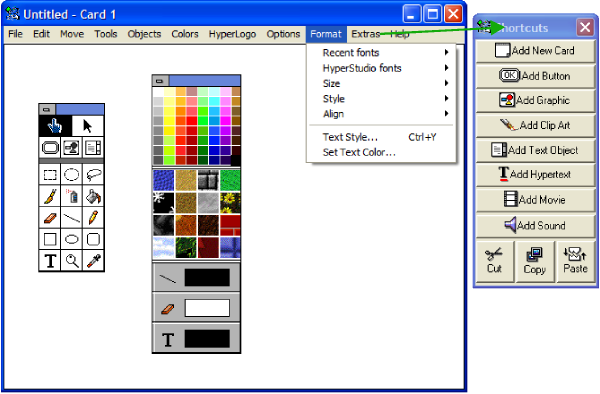
We’ll start with a conversation about the strategic concept, the project’s uses in and outside of the classroom, and development requirements. This means that faculty members can Expect to allocate some of their own time to the project, while the team provides research and technical expertise to move the project forward. We value collaboration involving faculty members and the HyperStudio team. This research influences the conceptualization and development of the portfolio of HyperStudio projects, as well as the HyperStudio Lecture Series, and Workshops.įAQ How much work is involved in a HyperStudio project?
#Hyperstudio 5 software#
ensure software integration of your project.assist in the content development of your project.

#Hyperstudio 5 mac#
It was as successful in schools on the Mac as it was on the IIGS and continues today. Although similar, it appears that HyperStudio was the easier to use of the two, a fact supported by the release of HyperStudio, oddly enough, for the Mac. HyperCard for the IIGS first appeared in 1991 and it's difficult to gauge whether this competing product helped push prices down and increased features, or simply split the market unnecessarily. The scripting language provided allowed those with programming skills to really create more powerful stacks while the drag and drop interface allowed anyone, even kids, to quickly and easily make their own hypermedia.

Version 3.1g was the last version of the program produced by Roger Wagner, and by that time and it had developed into something both programmers and non-programmers alike could get their teeth into. When you begin using any version of HyperStudio the Home Stack included with the program starts automatically and from this you soon begin to understand how the program works as you read the introductory notes and play with the examples provided. To use this included hardware and sample from a microphone or other audio input, the included SoundShop program can enable you to record, edit, trim and add effects to sounds, which can then be placed into HyperStudio.Īlso included is Sight n Sound, where you can add a startup pic and sound to a GS/OS boot disk. After all, surely it would have more impact on the IIGS with its colour graphics and brilliant sound over a black and white Mac?Īnd so HyperStudio was born and with it, came not only software, but a sound digitising card that required no slot and with the first version of HyperStudio, a small external speaker. Roger Wagner could see the potential of a HyperCard type product for the IIGS.
#Hyperstudio 5 code#
In essence, it did then what the web does now, only you don't need to know any code to do it and you're not restricted in any way as to how you can create layouts.
#Hyperstudio 5 series#
Move on to the next card in series to reveal more content.

But more than that, you could include buttons to control interactivity - click on a button to reveal an animation or play a sound. On each card, text, graphics, sound and music can be laid out. Which was coined first, hypermedia or multimedia, I don't know, but HyperCard represented one of the first products to make it happen.Ī Hyper Media file was called a 'stack', which contained any number of 'cards'. It gave the user the ability to create 'Hyper Media' - the combination of images, text, sound and interactivity. Before the Web, there was HyperCard, a creative application package developed and released in the late 80s by Apple for the Macintosh.


 0 kommentar(er)
0 kommentar(er)
